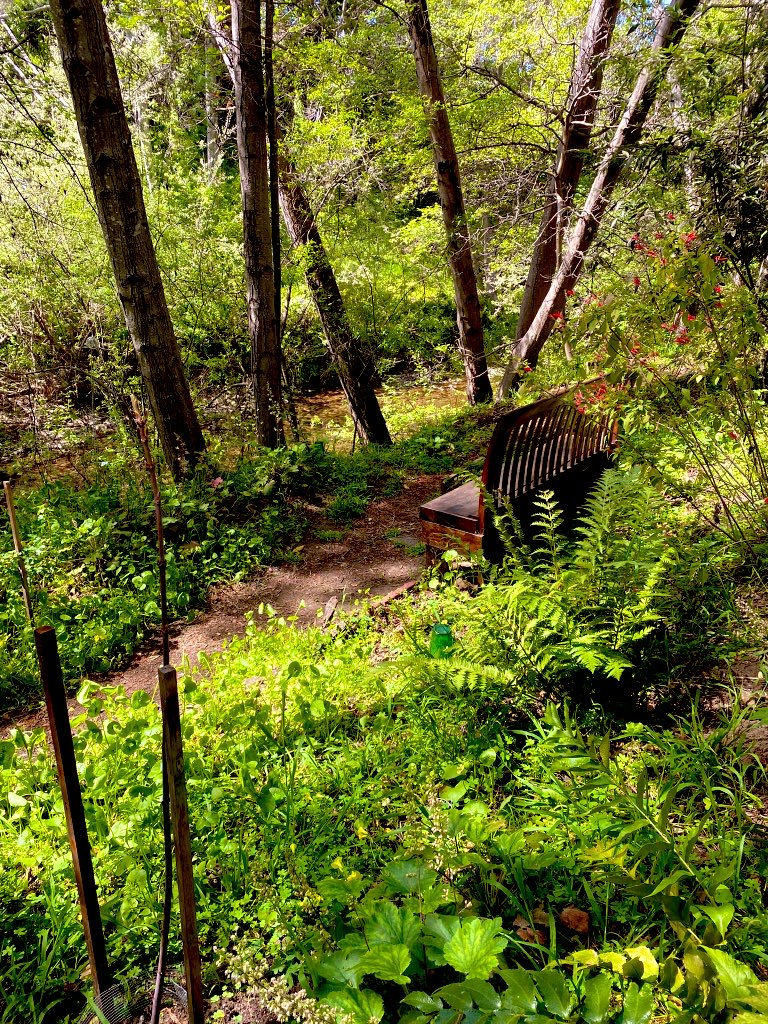Visiting ecologist gives lessons and homework
- Diane Lopez Wilson

- Apr 19, 2022
- 3 min read
by D.Lopez

“Value is placed on rarity,” George McMenamin insisted. “Humans are not preventative, instead they wait until something is scarce or going extinct, then they throw ten bucks at it hoping it will be saved, but by then it’s too late.” When George McMenanmin came to my forest garden, it was a lengthy conversation and lesson on the importance of conservation, prevention and possibility. George is an Environmental Consultant and Ecologist whom I hired to evaluate my creekside property. In an effort to influence the neighborhood, my fingers were crossed that we are not at the point of rarity, just yet, at least not here.
There is lots of work to be done. One third of an acre of earth doesn’t seem like much, relatively speaking, until one tries to weed it or remove invasive plants. During the evaluation, it was not entirely shocking to hear that turning my circumstance around within three years was a reasonable expectation. The point was to get help in restoring native plants along the creek and support neighbors to do the same. “George, why is this important?” The explanation unfolded in a way that was not imagined. We know that plants need nutrients for their growth, but these plants also release nutrients in unexpected ways. He saw that I was growing Creekside Dogwood (Cornus sericea) and said “Great! They will be happy here. Creekside Dogwood will supply micronutrients that help support steelhead in the creek.” Fifty points for me. This was not casual knowledge for most. It was exciting. Perhaps, if a few neighbors pitched in, we would have a steelhead hub; this seemed like a worthwhile experiment.
What was very important about this visit to the garden was the fact that the information came first-hand. This is not a Google search. This was not second or third-hand information from a book that assumes that a bit of botany or ecology work is in one’s background. This was a teacher-student experience with live examples of what were strengths and what were the weaknesses at present. This was the second time George was on my property in three years. The occasion helped me realize the truth about the gradual nature of stewarding a shift: none of this happens overnight.
From the time of his last visit, the Himalayan blackberry was eradicated, the vinca subdued and the Cape Ivy, a nutrient thief, was mostly under control however, a new invasive grass crept in: Ehrharta. Minus fifty points for not pulling it out before it went to seed and spread ravenously. He reassures me we do well for only two people managing the place, but it is hard not to be crestfallen; we have been working hard. The Ehrharta grass, chokes out the possibility of other native species, therefore it can be a setback until we get this under control.
Several things that George said stood out for me. Things that rang true and made him both compassionate and concerned by today’s world. “Life is its own reason and intrinsic right to exist.” He used the example of a lizard experiencing simple pleasure to sun itself as something to value. He insisted that we should take no joy in destroying anything, a tick, an invasive plant, because a life is lost. This was addressing a bigger world, in my opinion, but when I asked him what role he played in his work, he believed that he addressed the “small or medium picture.” He felt that if he sustained the great-great-great grandson bird from a tree he planted, it would all be worthwhile. This gave me hope.
In the end, the evaluation of my work needs to be exemplary and well informed. There is no time to guess, or even make educated guesses. Those that can make the most sacrifices will make the most differences in securing what knits us together today. If you, like me, are living in paradise, you are wallowing in a wealth measured by beautiful lands, seas, and commonplace splendor. What does a little garden have to do with any of it? It turns out, the answer is everything. The world runs on the microscopic and on exponentials. Our actions as individuals adds up. Bugs, Trees, Birds and bees, our houses or apartments, our take-out lunch boxes, our transportation system, and each relationship drives a path. A path that an ecologist might find bleak. As our conversation concludes, there is a healthy divergence in our perspectives, he the cynic, and I the optimist. Will people offer more than feel good money to mitigate the damage to the environment? George McMenamin keeps pressing forward despite the odds.
Photo: Soquel Creek by D.Lopez



Comments